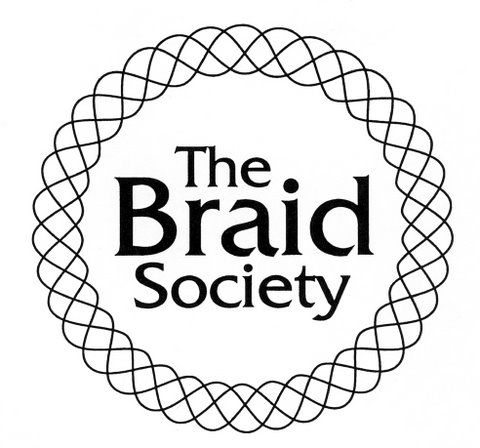| Members can log in by clicking on icon to the right |
Tablet weaving
Tablet weaving requires the use of equipment, but you can make the tablets yourself using a pack of playing cards cut to be square. In this example each square tablet is threaded from one side with four threads and assembled as a pack of tablets. One end of the group of threads can be tied to a handy hook and the other end secured to your waist. (If you are a much interrupted person, attach to the back of your chair) You can obtain very strong bands with tablet weaving useful for handles on bags or luggage straps.

Cut a square tablet from each playing card and use a hole punch to pierce 4 holes as shown above. You can pierce a centre hole as well so you can tie the tablets together when not in use.
You can write the letters on the tablets to help you in checking they are all correctly threaded from one side and both placed and facing the correct way. When threaded they can face all the same way \\\\\ or ///// be alternate \ /\ / or grouped like this \\ // to suit this pattern illustrated below provided by Annelese Hart. Instructions follow below pictures


Pattern Instruction for a 4 tablet pattern
The holes in the tablets can be threaded in the two sequences, three light and one dark thread and three dark one light thread and then placed in the order of the diagram. Wind the longitudinal (warp) threads round the back of chair or round a clothes horse to get an appropriate length - say 2 metres. Use smooth yarns and bright colours.
|
L = light thread Tablet 1 2 3 4 |
Line up the tablets together, remembering to place the same lettered holes side by side. In this instance two tablets face left and two face right. Practice turning the tablets forwards and back again as a group, one quarter turn. |
Weaving is done by passing a narrow (weft) thread through the space created by the quarter turn from one side to the other side giving the tablets a quarter turn each time. The weft will only show fleetingly at the side of the work. Wind the weft on a stiff cardboard shuttle and give firm beat after each turn on the threads to compact them.
The colours in the top rear holes lie on the surface producing the pattern. As you work, twist builds up behind the tablets.
To eliminate this twist you count the number of directional turns, turning first forward and then in reverse, for a specific number. This will provide alteration in the pattern, which you can study to see which combinations are most attractive. If you have never heard of this very old technique before, it may seem strange, so you can ask your library to order a book to help you understand it.
Card Weaving by Candace Crockett was published by the Interweave Press in 1992.
You will also find some information on the internet - type 'card weaving' or tablet weaving into your browser.

Part of a tablet band by Margot Lees
Begin Braiding is based on original material prepared by Felicity Tregear.
To download a printable version of this page, click here
